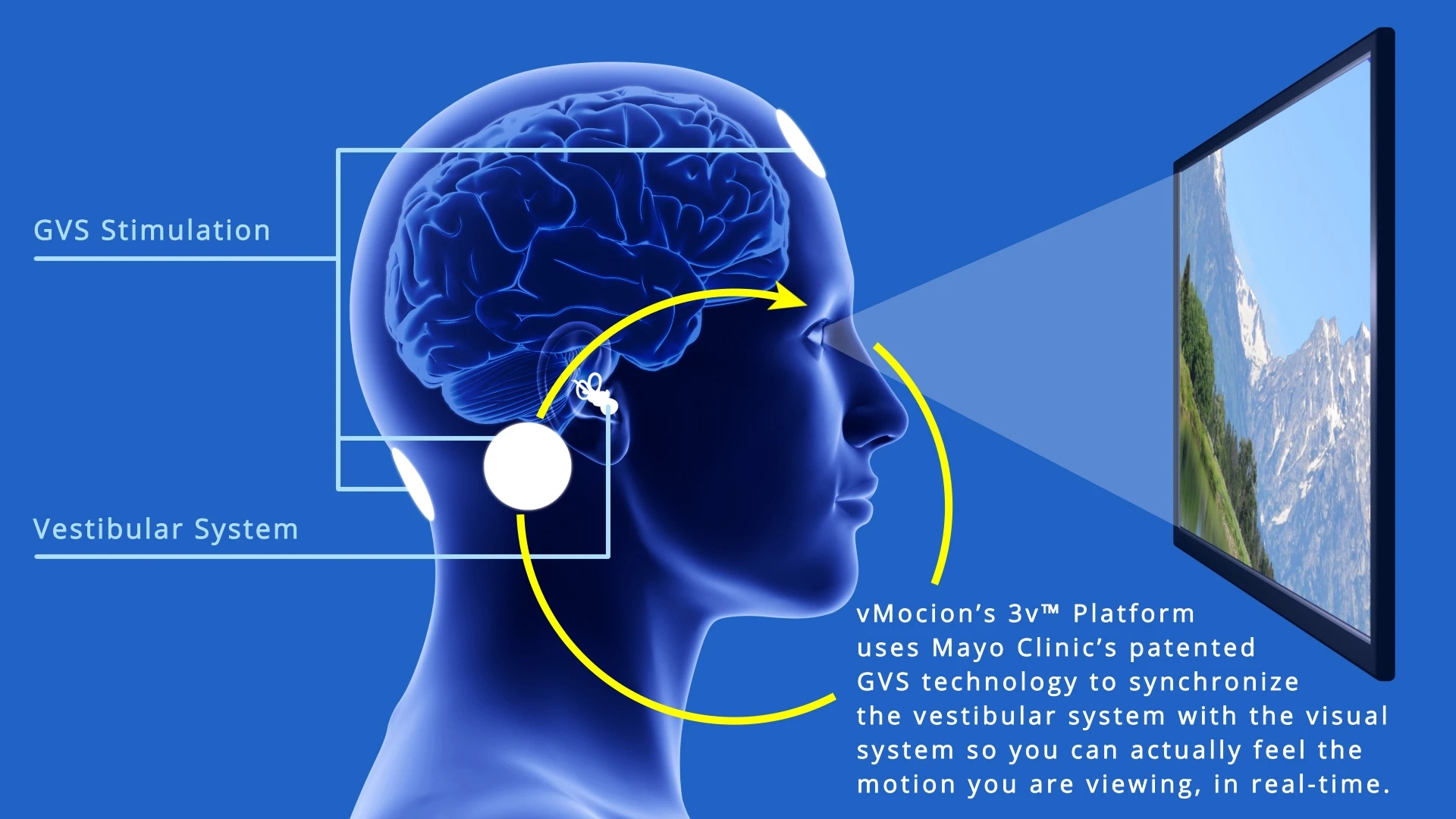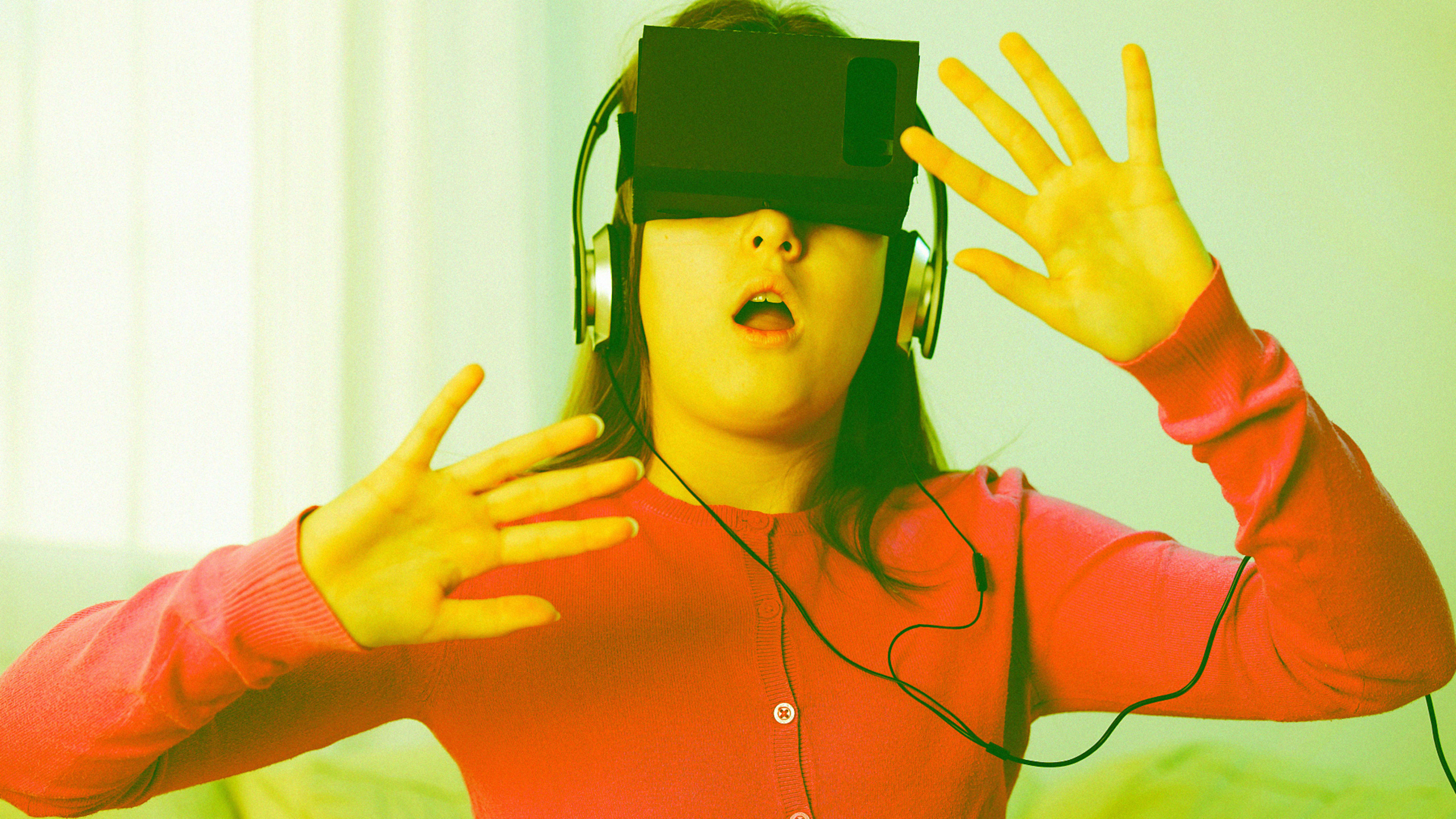VR sickness could soon be a thing of the past, thanks to new technology developed at the famed Mayo Clinic.
Today, the clinic announced that it has licensed its patented galvanic vestibular stimulation (GVS) technology to the Los Angeles-based entertainment company vMocion. GVS is aimed at helping to alleviate the nausea problem many people have when using virtual reality systems.

The idea is to incorporate GVS into a platform, known as 3v–which stands for virtual, vestibular, and visual–into VR and augmented reality systems, giving users what they call a three-dimensional movement experience.
Though there are no consumer systems currently using 3v, the hope is that virtual reality and/or augmented reality hardware makers will license the technology and build it into their gear in the near future.
The way GVS works is meant to be simple, using Mayo Clinic’s proprietary algorithms to take any two- or three-dimensional scene in a game or movie, and convert it into what vMocion calls a motion movie.
It does that thanks to integrated software, as well as a physical system that touches a user’s forehead, nape of the neck, and the area behind each ear. By doing that, GVS ensures that what the user sees and feels are synchronized to within a tenth of a second, a crucial step toward alleviating VR sickness.
The nausea that so many people have experienced with VR gear is due to a mismatch of the visual and the vestibular, vMocion said, and even boosting the frame rate of VR experiences past 90 frames per second will not solve the problem.
For now, a vMocion spokesperson told Fast Company, no hardware maker has licensed 3v, but there are a number of ongoing discussions with companies.
“By adding this magical sensation of motion in gaming, movies, amusement parks, and other entertainment environments,” Brad Hillstrom, the chairman of vMocion, said in a release, “our 3v platform is enabling a whole new dimension of motion that creates a truly immersive experience well beyond the current virtual or augmented reality technology offerings.”
To be sure, nausea has been a big problem for many users of consumer VR systems. However, in recent months, as hardware companies like Facebook-owned Oculus, Samsung, HTC, and others have edged toward the commercial launch of their consumer products, the issue has been less and less prominent. In part, that’s because the companies have figured out how to address the visual mismatch through steps like boosting the frame rate.
But vMocion believes that such an approach isn’t enough, and that there needs to be a more aggressive solution. That’s where it hopes 3v will come into play.
Because the technology is not currently available in any commercially launched hardware, it’s too early to tell. But the VR industry is acutely aware that gear like the Oculus Rift, Samsung Gear VR, HTC Vive, and others need to offer a nausea-free experience.
A bad VR experience on any platform or any device can turn people off to the entire technology forever, something that would be especially troubling to VR industry executives if the person who has the bad VR experience is a decision-maker at a Hollywood studio or an ad agency. Those people, after all, are the ones who have the budgets to finance big VR projects, the very projects that will become a financial lifeblood for this nascent industry.
Time will tell which approach wins out. Everyone will agree, though, that anything that helps people experience VR without getting sick is a very big plus.
Will Virtual Reality Go Mainstream?
Recognize your brand’s excellence by applying to this year’s Brands That Matter Awards before the early-rate deadline, May 3.
